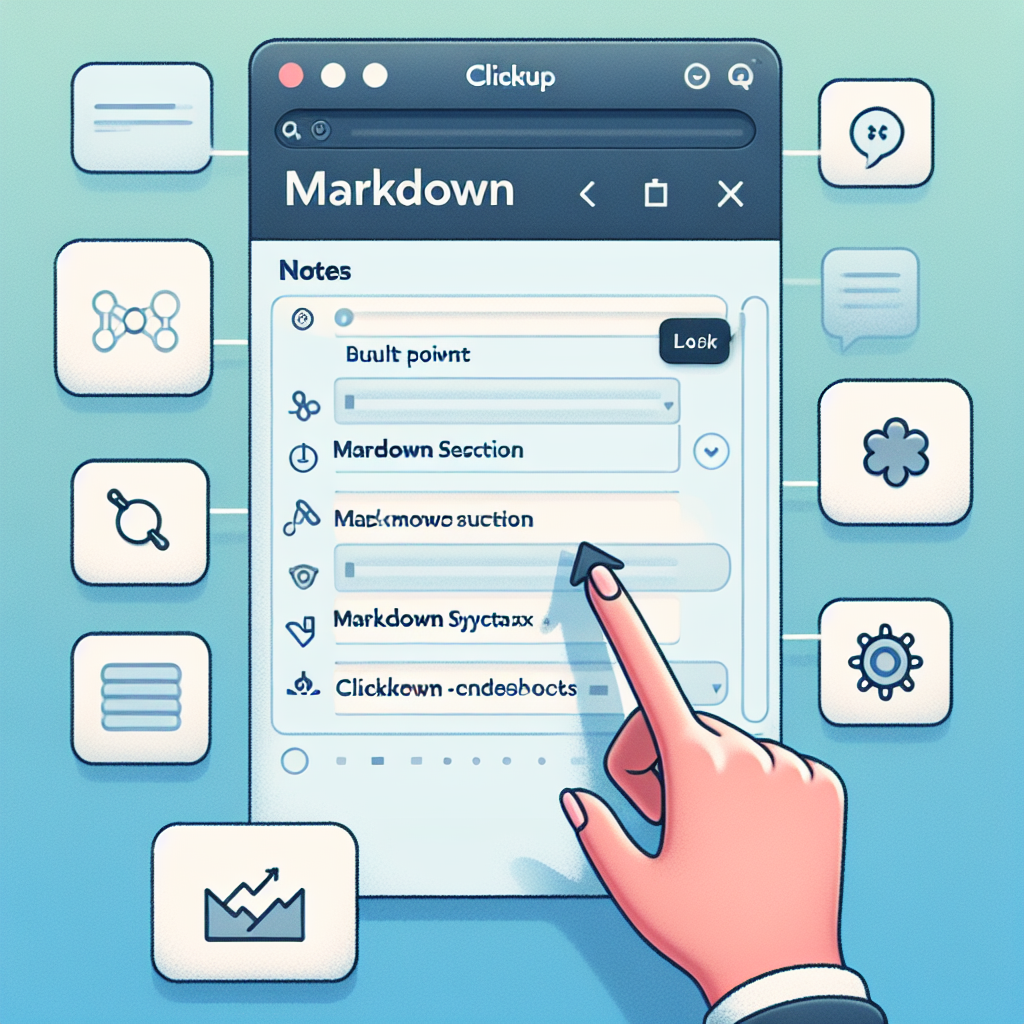ClickUp Markdown Guide
ClickUp Markdown simplifies text formatting in tasks and docs with symbols for bold, italic, lists, and code blocks, enhancing project collaboration.

"Explore our suite of free Markdown toolsto convert, format, and enhance your documents with ease."
In today's fast-paced work environment, efficiency is key to success. ClickUp, a powerful project management and team collaboration tool, offers a plethora of features to help users accomplish tasks more efficiently. One such feature is its support for Markdown, a lightweight markup language that allows users to format text quickly and concisely. This article will delve into how to use Markdown in ClickUp and how it can enhance your productivity.
What is Markdown?
Markdown is a simple markup language created by John Gruber and Aaron Swartz in 2004. Its design goal is to enable people to write documents in an easy-to-read and easy-to-write plain text format, which can then be converted into valid XHTML (or HTML) documents. Markdown's syntax is straightforward and is ideal for writing documents, blogging, composing emails, and more.
Markdown Support in ClickUp
ClickUp supports a variety of Markdown syntaxes, allowing you to format text easily in task descriptions, comments, documents, and more. Here are some common Markdown syntaxes and their applications in ClickUp:
Headers
Using the # symbol, you can create headers of different levels. One # denotes a level-one header, two #s denote a level-two header, and so on, up to six levels.
# Level-One Header
## Level-Two Header
### Level-Three Header
#### Level-Four Header
##### Level-Five Header
###### Level-Six Header
Bold and Italic
Surrounding text with ** or __ will make it bold, while using * or _ will italicize the text.
**This is bold text**
__This is also bold text__
*This is italic text*
_This is also italic text_
Links
Using the format [Link Text](URL), you can create hyperlinks.
[Visit ClickUp's Website](https://clickup.com)
Lists
Using - or *, you can create unordered lists, and using 1. you can create ordered lists.
- Item 1
- Item 2
- Item 3
1. Item 1
2. Item 2
3. Item 3
Blockquotes
Using >, you can create a blockquote.
> This is a blockquote
Code Blocks
Using three backticks (```), you can create a code block.
This is a code block
Task Lists
Using - [ ], you can create task list items, and using - [x], you can mark completed items.
- [ ] Incomplete task
- [x] Completed task
How to Use Markdown in ClickUp
Using Markdown in ClickUp is straightforward. You can use Markdown syntax in any place where you can input text, such as task descriptions, comments, documents, etc. Simply enter your text following the syntax rules mentioned above, and ClickUp will automatically convert it into formatted content.
Example
Suppose you want to create a task and use Markdown to format the text in the task description:
- Open ClickUp and create a new task.
- Enter the following content in the task description box:
# Project Kickoff Meeting
## Meeting Agenda
1. **Project Introduction**
- [ ] Project Background
- [ ] Project Objectives
2. **Team Introduction**
- [ ] Team Members
- [ ] Role Assignments
3. **Timeline**
- [ ] Milestones
- [ ] Key Dates
> Please have all team members prepare relevant materials in advance.
[Click here to view the detailed agenda](https://example.com/agenda)
- Save the task, and ClickUp will automatically convert the Markdown syntax into formatted text.
Conclusion
ClickUp's support for Markdown provides users with a quick and efficient way to format text, thereby enhancing productivity. Whether you are a project manager, team member, or individual user, mastering Markdown in ClickUp will help you communicate and collaborate more effectively. Start using Markdown to make your ClickUp experience smoother and more efficient!



Comments ()